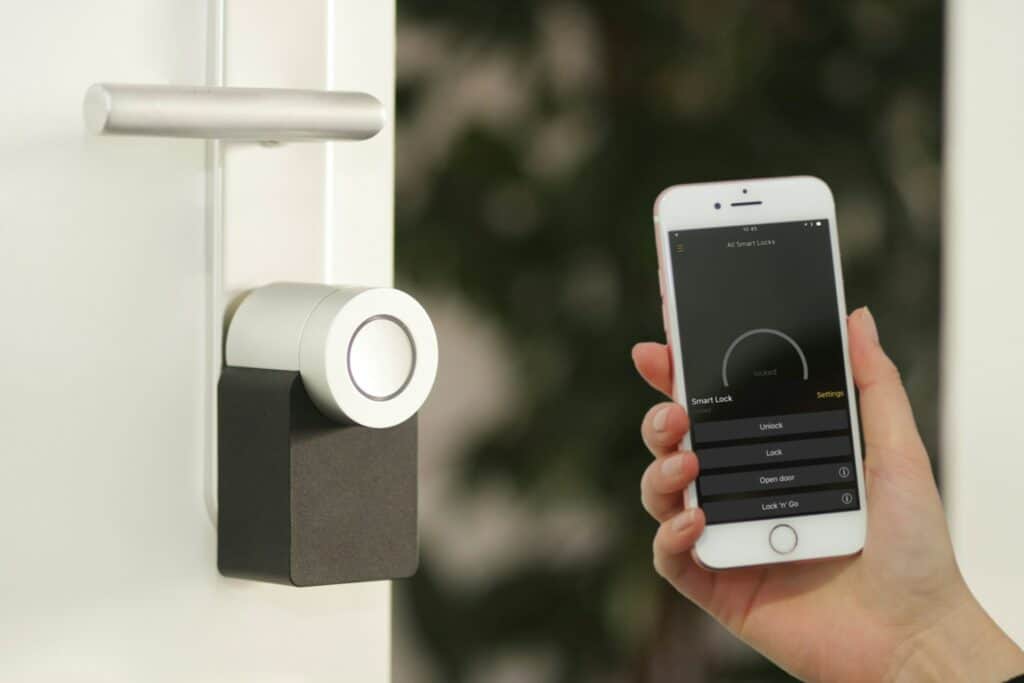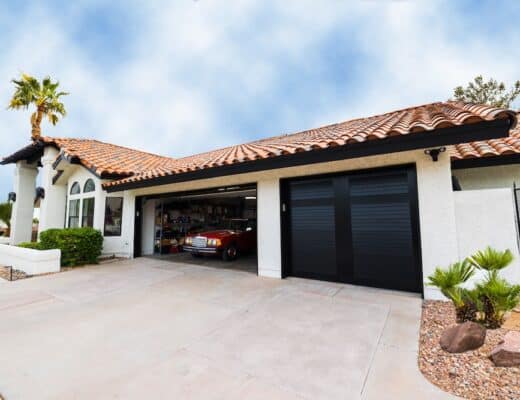In today’s world, where safety and security are paramount concerns, protecting our homes has become more important than ever. Fortunately, with the advancements in technology and the increasing availability of DIY solutions, it has become easier for homeowners to enhance the security of their properties without breaking the bank. This article explores the basics of DIY home security, providing valuable tips and tricks to help you safeguard your home effectively.

Understanding the Basics of Home Security
Home security is not just about burglary prevention; it is about creating a safe and secure environment for you and your loved ones. By implementing the right security measures, you can deter criminals and ensure peace of mind for everyone in your household.
Importance of Home Security
Home security should be a top priority for every homeowner. Not only does it protect your property and possessions, but it also safeguards your family from potential harm. A secure home creates a sense of peace and tranquility, allowing you to focus on other aspects of your life without constantly worrying about security breaches.
Key Elements of a Secure Home
A secure home is built on a strong foundation that includes several key elements. These elements include robust physical security measures, the use of technology, and regular maintenance and updates to ensure everything is in working order.
When it comes to physical security measures, it is important to have strong doors and windows that are resistant to forced entry. Reinforced door frames, deadbolt locks, and shatterproof glass are some examples of physical security features that can significantly enhance the security of your home.
In addition to physical security, the use of technology can greatly enhance the overall security of your home. Installing a reliable alarm system, surveillance cameras, and motion sensor lights can act as deterrents and provide you with valuable evidence in case of a security breach.
Regular maintenance and updates are also crucial to maintaining a secure home. This includes regularly checking and replacing batteries in smoke detectors and security devices, as well as updating your security system software to ensure it is equipped with the latest features and protections.
By understanding and implementing these key components, you can significantly enhance the security of your property. Remember, home security is an ongoing process that requires attention and dedication. Stay vigilant and proactive in protecting your home and loved ones.
Planning Your DIY Home Security System
Before diving into implementing security measures, it is essential to carefully plan your DIY home security system. Planning will help you identify vulnerable areas, prioritize security needs, and ensure efficient deployment of your resources.
Identifying Vulnerable Areas
Start by conducting a thorough assessment of your property to identify vulnerable areas. Look for potential entry points, such as doors, windows, and basement access. Additionally, consider factors like poorly lit areas, overgrown vegetation, or any other features that may provide hiding spots for intruders.
While assessing your property, take note of any unique architectural features that may require special attention. For example, if you have a large number of windows with decorative ironwork, you may need to explore options for reinforcing both the glass and the ironwork to ensure maximum security.
By understanding where your home is vulnerable, you can address these areas with specific security enhancements. For instance, if you have a basement with small windows that are easily accessible, you might consider installing window bars or security film to reinforce them.
Prioritizing Security Needs
Once you have identified the vulnerable areas of your property, prioritize your security needs. Determine which areas require immediate attention and focus on implementing measures that address those needs first.
Consider factors such as the frequency of use for different entry points and the level of visibility from neighboring properties. For instance, if you have a side entrance that is rarely used and hidden from view, it may be lower on the priority list compared to your front door or ground-floor windows.
It’s also worth considering the specific security concerns in your neighborhood. If there have been recent reports of break-ins or suspicious activity, it may be wise to prioritize the security measures that directly address those concerns.
By prioritizing your security needs, you can efficiently allocate your time and resources, making your DIY home security efforts more effective. Remember, a well-planned security system not only provides peace of mind but also acts as a deterrent to potential intruders.
Implementing Physical Security Measures
Physical security measures play a crucial role in deterring potential intruders. By fortifying your home’s physical barriers, you can significantly increase the level of security and make it more difficult for criminals to gain unauthorized access.
When it comes to implementing physical security measures, it’s important to focus on both the interior and exterior of your home. Let’s take a closer look at some additional steps you can take to enhance your home’s security.
Door and Window Security Enhancements
Doors and windows are the most common entry points for burglars. Strengthening these access points should be a top priority in your home security plan.
Consider installing solid core or metal exterior doors, reinforcing door frames, or adding a peephole to enhance your front door’s security. These measures can make it much more difficult for intruders to break in and give you peace of mind knowing that your home is well-protected.
For windows, in addition to secure locks, shatter-resistant films, or window bars, consider adding window sensors to your security system. These sensors can detect any attempts to open or break the window, triggering an alarm and alerting you or your security provider.
In addition to focusing on the front of your home, don’t forget about the importance of secure garage doors and side doors. These areas can also be targeted by intruders, so it’s essential to reinforce them with sturdy locks and consider installing security cameras to monitor these access points.
Outdoor Security Considerations
Outdoor security measures are just as crucial as indoor ones. A well-lit exterior can deter potential burglars by eliminating hiding spots and increasing visibility.
In addition to motion sensor lights, consider installing security cameras around your property. These cameras can provide you with real-time monitoring and video footage that can be invaluable in identifying and apprehending intruders.
Another outdoor security consideration is landscaping. While it’s important to maintain a visually appealing yard, it’s also crucial to ensure that there are no overgrown bushes or hedges that could serve as hiding places for intruders. Regularly trim your plants and maintain a clear line of sight around your property.
Remember, a well-maintained and well-lit outdoor space not only enhances security but also enhances the overall curb appeal of your home. By implementing these additional security measures, you can create a safer environment for you and your family.
Utilizing Technology for Home Security
The rapid advancement of technology has opened up a wide range of options for homeowners to enhance their DIY home security. By incorporating these technological solutions into your security system, you can add an extra layer of protection and convenience.
Choosing the Right Security Cameras
Security cameras are an indispensable part of a modern home security system. They provide visual evidence and act as a deterrent for potential intruders.
When selecting security cameras, consider factors such as resolution, field of view, night vision capabilities, and remote access options. Place them strategically to cover vulnerable areas of your property, ensuring maximum coverage.
With the availability of wireless and smart home security camera systems, installing and managing cameras has become more accessible than ever.
Understanding Alarm Systems and Sensors
An alarm system is a key component of any DIY home security setup. Modern alarm systems come with various sensors that detect unauthorized entry, smoke, carbon monoxide, and even flooding.
Consider installing an alarm system that suits your needs and budget. Place sensors in critical areas, such as entry points and high-value areas, to provide an early warning in case of a security breach.
Connect your alarm system to a monitoring service, which can alert you and emergency responders in case of an incident.
Maintaining Your DIY Home Security System
A DIY home security system requires regular maintenance to ensure continued effectiveness. By performing routine checks and updates, you can ensure that your security measures are functioning properly at all times.
Regular System Checks and Updates
Regularly inspect your security cameras, alarm systems, and other security components to ensure they are in good working order. Check for any signs of wear and tear, damaged wiring, or malfunctioning features.
It is also essential to keep your security system up to date with firmware upgrades or software updates provided by the manufacturer. These updates often patch security vulnerabilities and add new features to enhance the system’s performance.
Dealing with Common Security System Issues
Despite our best efforts, security systems may encounter occasional issues. Familiarize yourself with common problems that may arise and troubleshoot them promptly.
For example, false alarms can be caused by misconfigured motion sensors or low battery levels. By addressing these issues promptly, you can maintain the reliability and effectiveness of your DIY home security system.
In conclusion, DIY home security is an excellent way to protect your property and loved ones while giving you peace of mind. Understanding the basics of home security, planning your system, implementing physical security measures, utilizing technology, and maintaining your system are all crucial steps in creating a secure home environment.
By investing time and effort in improving your home’s security, you can create a safer living space and deter potential intruders, ensuring the well-being of your family and valuables.



